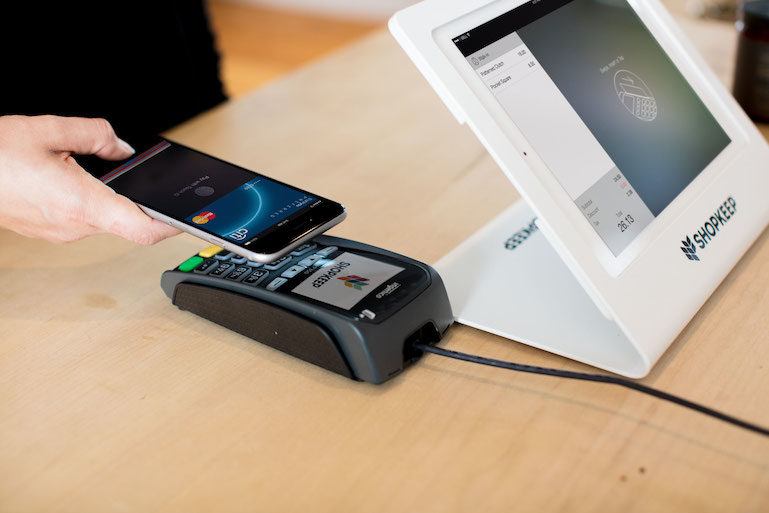
Choosing the Right Online Marketplace for Your Business
With more and more online marketplaces and selling platforms popping up each day, the range of options available to retailers has increased dramatically.
Whether you want to sell homemade crafts, antiques, expensive jewels, or cool new electronics, it’s worth putting time and effort into researching which platform is right for expanding your retail business online.
Where to Sell Online
Amazon, Etsy, Wish, Depop, and eBay are among the top players in the online marketplace scene. Each platform provides an additional channel to market and sell products, attract new customers, and reduce marketing costs through established marketplaces. However, there are advantages and drawbacks to each online marketplace. Continue reading to learn more, and you’ll be selling online in no time.
Etsy
Etsy is the leading marketplace for selling homemade goods. The site gives you the option to create a shop and customize it however you like, even by adding your logo and banner.
Setting up an Etsy storefront is easy, and you can create listings quickly and start selling right away. This makes the platform ideal for those that want to make some money out of their hobby.
Joining and creating a shop on the site is free, but there are some fees in place. However, the initial investment is extremely low, as the only thing to pay for before making a sale is the listing fee. Each listed item requires a $0.20 fee to appear on the virtual shelves of your store.
Once you make a sale, Etsy also charges you 5% of the price of the item sold through the platform as well as a 3% + $0.25 payment processing fee.
Pros
- People around the world use Etsy as their go-to website when they are searching for unique or personalized goods, helping you reach more customers.
- There is a helpful community and support system to guide you through the setting up and selling process. The company has compiled a useful Sellers Handbook, and you can also seek advice on the Etsy forums.
- Etsy automatically takes care of VAT for you, which means one less tax calculation for you to worry about.
You can manage your shop on the go through the Etsy selling app, so you never leave a buyer waiting.
Cons
- Because Etsy is the go-to place for selling handicrafts, there is significant competition. Even if you have created something that you think is unique, it is likely there is a very similar product already there!
- It can be challenging to get your products seen, even though Etsy has promotion tools that can help with exposure.
- There tends to be a customer-focused resolution bias when a problem is reported. This means that Etsy doesn’t always prioritize the concerns of sellers and instead focuses on buyer satisfaction.
Amazon
Globally, Amazon is one of the biggest online marketplaces, used by millions to purchase a vast range of products.
Initially, Amazon was merely a platform used to sell books. However, since its founding, the company has expanded dramatically. The site is now used to sell pretty much every consumer good imaginable, as well as digital media like movies, music, and video games.
Amazon is also known for selling its own electronic devices such as the Kindle ebook reader, Kindle Fire Table, Fire TV Stick, and Amazon Echo.
For your standard or traditional retail shop, Amazon is almost certainly the best online marketplace for selling online. The great thing about Amazon is that it can be used to sell a massive range of items, from clothes to electronics. Although there are individual sellers on Amazon, it is more often used by online businesses.
Selling through the Amazon marketplace is quick and straightforward. There are several different programs available depending on what and how much you are planning to sell. Some options have a monthly selling fee, while others include a per-item fee, a referral fee, or a variable closing fee, or a combination of the above.
The Individual plan is for those who only want to sell a little, less than 35 items a month to be exact. The Pro plan can be used by anyone who wants to sell more than this at a monthly subscription of $39.99. The per-item fee depends on the venue, but on Amazon.com you should also expect to pay $0.99 per item sold on the Individual Plan.
The referral fee is based on the product category, and Amazon will either charge around 15% of the sale price, or a minimum referral fee of approximately $1. The company will charge whichever of the two is higher for each item. For example, if you are listing an item for sale for $7.00, Amazon will charge you 15% of the sale price as this works out to $1.05, more than the minimum referral fee.
You should also account for shipping costs. You don’t want to put potential buyers off by quoting a high postage cost, but equally, you don’t want to pay for shipping out of your own pocket. You should do some research into how much similar products charge for postage. As Amazon is a global marketplace, postage could vary depending on which country you are selling to.
A great option when selling through Amazon is the Fulfilment By Amazon (FBA) option. You can avoid the hassle of having to pack and post every item that you sell yourself. Instead, you can send them all to an Amazon fulfillment center, and they will do all the order fulfillment and shipping work for you when a customer makes the purchase. Your items will also become available for Prime free delivery.
Regarding advertising, Amazon offers some excellent services to help you promote your products. The robust Amazon marketing services dashboard helps you to gauge impressions, clicks, sales, and more. Therefore, you will be able to know when you need to change your marketing tactic – whether this is adding or removing keywords, revamping your listing, or adjusting prices.
This service uses a cost per click auction-based pricing model, and the more competitive your bid is, the more likely your ad will be displayed. The minimum cost per click is $0.02.
Once you have started your advertising campaign on Amazon, you are free to try new keywords, adjust budgets, and pause and restart at any time. These are known as self-serve ads.
Alternatively, you can opt for a premium ad, where you chose from a suite of display, ecommerce ads, videos and more, as well as the option of offline solutions.
Pros
- The brand name is highly trusted, and it is the first stop for many when they want to make a purchase online.
- Amazon will handle tax collection for you, giving you one less thing to deal with when it comes to running your business.
- There are millions of people visiting the site every single month looking to shop for products.
Cons
- There are little to no branding opportunities when it comes to selling on Amazon.
- It is not the ideal platform for selling low-margin products due to the fees and pricing structure.
- Naturally, when selling on Amazon, competition is fierce! Ideally, you need to have a long-term strategy to stay on top of competitors.

eBay
Second, only to Amazon as the most prominent online marketplace on the web, eBay is a true veteran in the ecommerce world. Initially, the site was purely auction-based. Sellers listed new or used items on the site, and customers tried to outbid each other for the item.
Now, however, sellers can list items as ‘Buy it now,’ showcasing products at a specific price point for purchase. Although there are still many second-hand items available to purchase on this marketplace giant, the site now leans more towards new items. As a result, many eBay discounts and promos became available, together with the popular Daily Deals.
Both online businesses and individual sellers use eBay to sell online. A few years ago, it was more common to find individual sellers on the site, trying to get rid of unwanted second-hand goods. Although you will still find this, there are now a lot more large businesses using it to sell inventory.
eBay allows anyone to set up an account and sell almost any item to a worldwide audience, from cars to homemade goods. Many eBay users are individuals just trying to make some extra money selling their old items. Alternatively, many users are individual businesses who have set up their own eBay store.
Like many selling platforms, there is a cost that comes with using the service. There are fees for each sold item, and if you have your own eBay store, there is also a monthly subscription fee.
With eBay, you can list up to 50 listings on a monthly basis at zero cost. Each additional listing will come at an additional charge of $0.30 per listing. If you manage to sell the item, then you have to pay 10% of your final sale, which includes the postage fee. If you are selling a large item, you will be pleased to know that the final value fee is capped.
So, for example, if you managed to sell an item for $10 and charge $2 postage after you remove the $0.30 listing fee and the 10%, your total profit is $10.50.
If your buyer uses PayPal to make the purchase, there are extra fees involved. PayPal will charge you an additional 3.4% of the total sale, plus $0.30 per transaction.
As a seller on eBay, you can advertise your listings by promoting them, helping you stand out from the crowd. Your products will be advertised in prominent locations where buyers are actively shopping for related items. Where your ads appear is based on the relevance of your item to the buyers’ search and your chosen ad rate, in addition to various other factors.
You are in total control of the ad, choosing the overall percentage of the sale price that you want to promote your listings. Plus, there is a ‘no sale, no fee’ promise. The ads are quick and easy to set up, and you can adjust them at any time. At the touch of a button, you can view detailed campaign data to help optimize your selling strategies for the very best results.
Pros
- eBay has links with PayPal which can make payment processing very straightforward.
- As an eBay seller, you will have access to lots of help and support throughout the whole selling process, from setting up the shop to making a sale.
- Selling on eBay is quick and easy; you can list an item in just a few minutes, and it doesn’t take long to create an entire store.
- It helps that eBay is one of the most recognized marketplaces in the world. People trust the name and the brand, and therefore are likely to feel more confident in making a purchase and entering payment details.
Cons
- Millions of other sellers are also using eBay, so there is much competition out there, no matter what item it is that you are selling.
- Due to its links with PayPal, you have to offer it as a payment option, even if you don’t want to.
Depop
Depop is a mobile app where you can see what people you know are liking, buying, and selling. In the app, you will be able to find stylists, artists, shops, vintage sellers, and much more.
The platform could be described as “eBay meets Instagram,” as you can buy and sell directly from the app while also connecting with friends and brands. Currently, clothing is dominating the site. However, there are other accessories and household items available.
Think of Depop as an online garage sale. People use the app to sell odds and ends that they no longer want or need to people who do have a use for it. The majority of users on the app are not using it as a primary business channel, but rather as a way to make a little extra money.
For many, the app is an ideal place to sell unwanted garments to other bargain buyers. The company claims a 10% commission on every purchase made, so if an item doesn’t sell, you don’t have to pay a penny. Again, if the buyer uses PayPal to make the purchase, an extra 3.4% will be charged, along with an additional $0.30, although this varies country by country.
For example, if you list an item for $10, Depop will get a $1 commission, PayPal will get $0.64, leaving you with a profit of $8.36.
Although the site is mainly used by individuals to make some extra cash, creatives and entrepreneurs are making use of this space to set up and run successful small businesses.
Pros
- A listing can be set up in seconds, all you need to supply are a few pictures, the price, and the category.
- You can take payments through PayPal for a quick and easy transaction.
- The app is very secure from both the buying and selling point of view.
- Visually, you can make your products and account look very attractive with minimal effort involved.
Cons
- The fact that Depop is mobile-based could be considered both a positive and a negative since your potential customer base is restricted to those who use their mobile devices to shop. Although shopping through a mobile device is growing in popularity, there are those who prefer to shop via a desktop computer.
- Depop is not the platform to use if you are running a large business. It was created for small ecommerce stores.
- The app is nowhere near as big as online marketplace giants like Amazon or eBay, so it does not receive anywhere near the same amount of customers.

Wish
Wish describes itself as a platform that makes shopping fun, and with 300 million subscribers, it’s gaining in popularity each day. Not only can Wish be accessed on Android, iPhone, and Windows phones, but users can also access it through a desktop computer or tablet.
It has gained so much popularity since its release thanks to its clever advertising, which markets many of its products at extremely low prices. One of the reasons that it can offer goods at such discounted rates is because it ships many products directly from the manufacturer in China. Of course, if you are selling on Wish, chances are you will not be able to compete with these low prices, but with the right product, you can still tap into Wish’s large, engaged audience of shoppers.
To get started on the platform, buyers need to first register an account, from there they can browse many items by categories that include Accessories, Fashion, Gadgets, Hobbies, Home, and many others. There is even a section where customers can customize their own products. This section is called ‘made for you,” where users can customize products like T-shirts and mugs with their name.
In general, services are not allowed to be listed on the app, only physical items. However there are a few exceptions made for custom products like clothes and paintings. The app will also show products to consumers based on their demographics and purchase history.
Many people choose to sell with Wish due to its fees model – you don’t have to pay anything until your item sells. This is known as a revenue share, where you are not charged any fees upfront. You agree on your revenue share when you sign onto the Wish merchant platform.
For example, if Wish has a revenue share of 85/15, and you sell the item for $8.00 with a $2.00 shipping fee, you will take away $8.50 in total – 85% of $10.
Pros
- You can rest assured that your products will be shown to the right demographics, increasing your chances of a sale.
- It is risk-free, you don’t have to worry about paying to list a product if it is not selling, as there is a ‘no sale, no fee’ policy.
- Millions of people spend a lot of time browsing on the app, so your products are being exposed to people who are ready to buy.
Cons
- Generally, items are listed at very low prices, so competition-based pricing can be challenging.
NewEgg
NewEgg is the number one marketplace for everything tech related, currently with a reach of 36 million users. Using this platform, you can sell to over 50 countries with customized marketing available.
It started as a tech hub, but has since moved past its roots in all thing electronic to now offer everything from cosmetics to furniture. Due to its reputation as a technology marketplace, the customer demographic is mostly made up of women aged 18 – 35 and tech-savvy men. It also offers a B2B sales portal which allows you to sell wholesale to other sellers.
To start selling, you must first apply, telling the company all about your business. Once accepted, you pick a membership plan and then you can start listing and selling your items. There are various memberships available. The standard membership is free. Alternatively, merchants can opt for a professional membership at $29.95 a month, or an enterprise membership charged at $99.95 a month.
The standard membership lets you sell up to 5,000 items a month, the Professional membership allows up to 25,000, and the enterprise subscription allows an unlimited amount. The professional and enterprise options also come with multiple other seller benefits such as a dedicated account manager, curated marketing programs, personalized post-purchase emails, and various others.
The company takes a commission depending on what it is that you are selling. For example, if you are selling appliances, beauty products, or home and living goods, the commission rate is 12%. There is a huge range of categories, and the full list can be found on the NewEgg Merchant information page.
Pros
- Overall NewEgg charges low commission rates when compared to other marketplaces.
- On average the site receives 6.1 million unique visitors every month in the US alone, so you can rest assured you have a large base of potential customers.
- The membership system allows you to tailor your seller experience to exactly what you need. If you only plan on selling a few items a month, you don’t have to worry about paying any membership fee.
Cons
- To become a seller on NewEgg, you must first past a screening test to prove that you are committed to providing excellent customer service.
- Buyers on NewEgg are usually pretty educated when it comes to products, so you may struggle slightly if you are trying to sell unbranded products.

BigCommerce
BigCommerce makes it as easy as possible for merchants to sell online with their ecommerce platform. Not only does it enable you to create your very own online store, it provides users with the option to sell on global marketplaces such as Amazon and eBay, and also social media networks.
The platform was built with entrepreneurs in mind, as well as established businesses that are looking to grow their revenue by expanding their online presence and enabling ecommerce sales. This option is perfect for sellers who want to build their own store instead of relying solely on an already established marketplace.
BigCommerce provides a diverse range of website templates that help you to capture the essence of your business and make your site entirely your own. It also works with some of the leading payment providers and shipping solutions, reducing a merchant’s workload dramatically.
You can offer your customers coupons, gift certificates, wish lists, gift wrapping, and much more. It also comes with many other useful features that don’t come standard with the majority of platforms, such as the SuperZoom, a tool that allows customers to zoom into your product image by merely hovering their mouse.
BigCommerce stores also look great on mobile devices, and with the rise in mobile shopping, this is a must-have.
BigCommerce offers four pricing plans: Standard at $29.95 a month, Plus at $79.95 a month, and Pro at $299.95 a month, and BigCommerce Enterprise merely depends on the merchant’s requirements. The more you pay every month, the more extensive the range of features that come with the store. For example, it is not until you purchase the Plus subscription that you will be able to access the marketing tools.
Many people like the fact that there are no other fees charged, the subscription fee is all you have to worry about paying. (This doesn’t take into consideration any credit card fees).
Pros
- BigCommerce has a great support system. Merchants can get their questions answered 24/7, 365 days a year either by phone, live chat, or email.
- The company helps you to increase your traffic and conversion rates using built-in ecommerce marketing tools.
- The subscription plan lets you know exactly what you will be charged every month.
Cons
- Although BigCommerce offers a variety of free website templates, premium templates do cost extra. If store design is very important to you, you will want to budget for this additional investment.
Thanks to the internet and the rise of online shopping, retailers no longer need physical brick and mortar stores to be successful. You can sell to people all over the world with relatively little hassle. By choosing the right online marketplace or shopping cart software for your products and business plan, you can grow your business successfully.
SEE ALSO: How to Transition From Brick-and-Mortar to an Online Store
There is a vast range of options available, so you should try to work out what elements matter to you the most. Do you want to find the most cost-effective solution? Do you want to use a platform that focuses on a particular industry, such as Etsy for craft goods or NewEgg for tech? Do you want to sell on an already established marketplace like eBay or Amazon or avoid the direct competition and create your own site using BigCommerce?
Although it may be time-consuming, choosing the right online marketplace can make or break your business, so make sure to make a decision wisely.
Want to try ShopKeep for yourself?
Just answer a few easy questions.
Need help finding the right point of sale?
Just complete the form. We’ll call you right back to explain how ShopKeep can work for you.
Hit the ground running.Sprinting, in fact!
Read our free, comprehensive guide, Small Business 101, to learn all you need to know about starting a thriving business.

